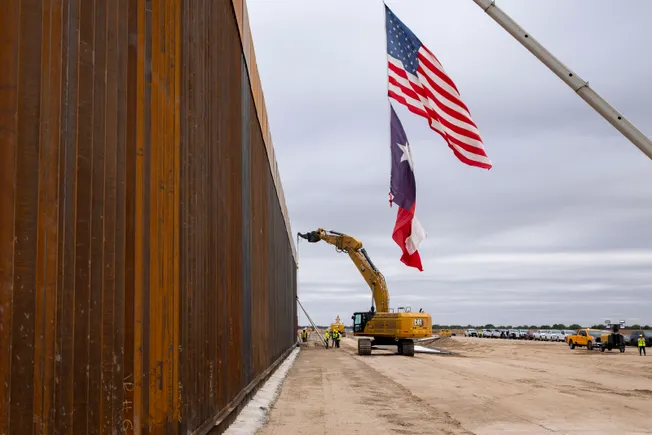
Builders say One Big Beautiful Bill Act will fuel construction activity
The One Big Beautiful Bill Act is opening the door for increased construction investment, but it may also deepen existing challenges tied to labor and supply.
Unlike the Inflation Reduction Act, which concentrated its support on clean energy, the One Big Beautiful Bill Act casts a wider net, said Vance Walter, senior director of legislative affairs at Associated Builders and Contractors.
Its most transformative provisions include the restoration of 100% bonus depreciation, immediate expense of research and development costs and a permanent extension of the 20% pass-through deduction under Section 199A, said Deniz Mustafa, senior director of infrastructure finance at Associated General Contractors of America. These serve as boons for construction activity, according to industry sources.
“This also improves cash flow and makes it easier for contractors to replace aging equipment,” said Mustafa. “In the construction industry, this means it is easier for companies to access equipment that is safer, cleaner and more efficient.”
The changes are particularly significant for small and mid-sized contractors, where cash flow and tax predictability influence everything from equipment purchasing to hiring.
“Businesses can now immediately expense capital investments through 100% bonus depreciation,” said Walter. “This will encourage firms to invest in new construction equipment and technologies, boosting safety, quality, productivity and economic growth.”
Winning sectors
The biggest potential winner may be manufacturing construction, said John Robbins, global head of enterprise project management at Turner & Townsend, the U.K.-based real estate and infrastructure consultancy. Expect more construction activity on automotive, food production and semiconductors, all of which now qualify for the 100% deduction, he said.
“I believe this will stimulate activity and investment with construction of new high-tech manufacturing. These tax enhancements should be very attractive and help greenlight shovels in the ground throughout the country,” said Robbins. “Any newly built non-residential facility whose primary use is to manufacture, process or refine tangible goods can take the 100% deduction.”
The provision covers a wide swath of domestic production, so long as projects break ground between January 2025 and December 2028, and are placed in service by 2031, said Robbins. This means projects that have been in a holding pattern or on the design boards — the Project Stress Index increased 11.4% in May — can “now be accelerated,” according to Robbins.
Beyond factory construction
Other sectors likely to benefit include defense-related construction, air traffic control improvements and traditional energy production, said Jeff Urbanchuk, senior vice president at the American Council of Engineering Companies. The bill also sets aside nearly $50 billion for border security construction, he added.
That funding could lead to new contracts across the southern U.S., potentially driving demand for firms with experience in civil and federal work. Projects tied to air traffic control and defense infrastructure may also open the door for specialty contractors and design firms, especially those with experience navigating federal contracts and military specs.
Robbins added electric production, including zero-emission nuclear power, could also see renewed construction activity due to the broader capital-friendly structure of the bill. That may prompt developers to advance previously delayed or underfunded power generation work, said Urbanchuck.
“America’s engineering firms are engaged across the domestic energy sector, designing systems that produce and transmit power generated from traditional, nuclear and renewable sources,” said Urbanchuck. “We do believe the Big Beautiful Bill will lead to meaningful growth.”
A rush to build
But as more construction companies benefit from greater activity, pressure could build on labor and material pipelines already under strain, said Joseph Molloy, tax partner at Anchin, a New York City-based accounting, tax and advisory firm.
“The bill’s emphasis on domestic sourcing and reshoring may increase demand for U.S.-based construction labor and materials,” said Molloy. “[That’s] potentially intensifying workforce and supply chain pressures.”
That strain may only increase as firms rush to break ground before other provisions phase out, said Robbins. For example, tax credits for energy-efficient buildings are set to expire after 2026, creating urgency for stalled or newly planned green developments.
“Timing and financing strategy now matter as much as project cost in maximizing the new law’s benefits,” said Robbins.
Enhanced incentives for projects in opportunity zones could also drive more construction in distressed communities, particularly in residential and mixed-use segments, he added. Yet, even with these provisions in play, long-term momentum still hinges on what comes next, said Urbanchuk.
“Overall, the Big Beautiful Bill is a step forward for our industry,” said Urbanchuk. “Our attention now goes to what Congress is planning for the reauthorization of the Infrastructure Investment and Jobs Act, which is set to expire in September 2026.”
Post a Comment
You must be logged in to post a comment.





